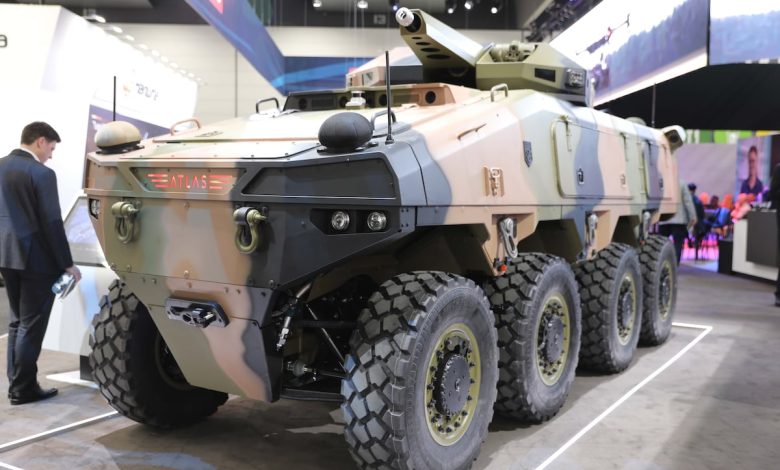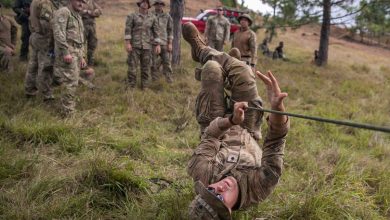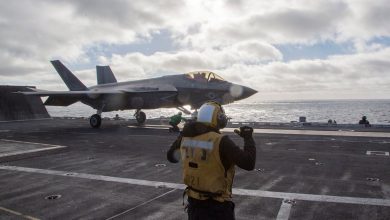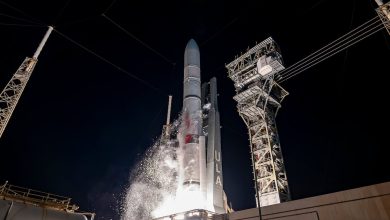BAE Systems pitches ground robot to drone-hungry Australian Army

MELBOURNE — As the Australian Army reconfigures itself to incorporate unmanned ground vehicles, vendor BAE Systems senses an opening for its new ATLAS 8×8 vehicle.
The name is short for Autonomous Tactical Light Armour System, and company executives unveiled a “collaborative combat” version of the vehicle at the Land Forces 2024 exhibition here earlier this month.
The show ride was armed with a Bushmaster 25mm cannon, but other possibilities include larger-caliber weapons, mortars, antitank guided missiles, loitering munition launchers and surveillance sensors, according to the firm
To evaluate new technologies such as unmanned ground vehicles (UGV), drones, robotics and counter-drone systems, the Australian Army is converting the Adelaide-based 1st Armoured Regiment into a test and experimental unit.
Lt. Col. Jake Penley, its commanding officer, told Defense News that the unit will hand in its M1A1 Abrams tanks later this year, before achieving an initial operational capability in the experimentation mission on Feb. 1, 2025.
Penley said of his unit’s new role: “The ability to get high-end emerging technology in the hands of soldiers sooner in an experimentation role means we can verify and validate those platforms quickly and get them out to combat units.”
The unit is already evaluating optionally manned M113 tracked vehicles, after BAE Systems Australia converted 20 vehicles. “They’re really beneficial,” Penley said, and the regiment’s armor expertise means they know how to maintain them.
BAE Systems is currently talking to the Army about upgrading these optionally manned M113s with more advanced sensors and software from the ATLAS project.
The 10-ton-class combat ATLAS – slightly smaller than LAV-25 8×8 armored vehicles used by the Australian Army and U.S. Marine Corps – can perform advanced reconnaissance, armored overwatch, flank protection and convoy escort missions.
Paul Finch, Project Manager Land Autonomy at BAE Systems Australia, told Defense News that the ATLAS employs a Supacat HMT Extenda chassis and drive module, plus a Vantage unmanned turret from Slovenian company Valhalla Turrets.
With a residual 6-ton payload capacity, it can fit inside a 20-foot standard shipping container. This opens up numerous transportation options by road, train and ship, while six ATLAS vehicles fit inside a C-17 aircraft.
Finch said the prototype was completed in July following a contract award to Supacat in June 2023. He said the vehicle is around 90% complete, with work still to be done to qualify subsystems and to train its software.
The ATLAS is competing against mostly tracked platforms in this medium-sized UGV category, but its wheeled configuration brings advantages in terms of road mobility.
Gordon Arthur is an Asia correspondent for Defense News. After a 20-year stint working in Hong Kong, he now resides in New Zealand. He has attended military exercises and defense exhibitions in about 20 countries around the Asia-Pacific region.
Read the full article here






